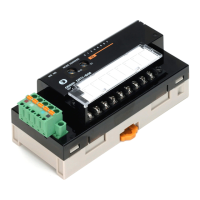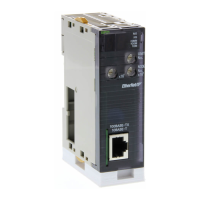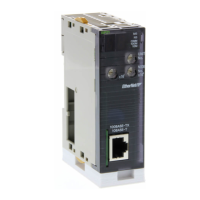39
DeviceNet Remote I/O Communications Section 3-2
Example 4: Using 16 inputs and 8 inputs (Expansion Unit).
Example 5: Using 16 outputs and 8 inputs (Expansion Unit).
Allocating Real I/O Data
and Generic Status Flags
Together
The Generic Status Flags are for providing notification of the status of the
Smart Slave to the host. They are allocated to the Master Unit’s IN Area and
consist of 8 bits.
Example 1: Using 16 inputs.
Example 2: Using 16 outputs.
Example 3: Using 32 inputs.
Example 4: Using 16 inputs and 8 inputs (Expansion Unit).
Example 5: Using 16 outputs and 8 inputs (Expansion Unit).
IN Area
15 0
Address header Allocated 16 inputs.
Address header + 1
Allocated 8 inputs.
OUT Area
15 0
Address header Allocated 16 outputs.
IN Area
70
Address header
Allocated 8 inputs.
IN Area
15 0
Address header Allocated 16 inputs.
Address header + 1
Generic Status Flags
OUT Area
15 0
Address header Allocated 16 outputs.
IN Area
70
Address header
Generic Status Flags
IN Area
15 0
Address header Allocated 32 inputs.
Address header + 1
Address header + 2
Generic Status Flags
IN Area
15 0
Address header Allocated 16 inputs.
Address header + 1
Generic Status Flags
Allocated 8 inputs.
OUT Area
15 0
Address header Allocated 16 outputs.

